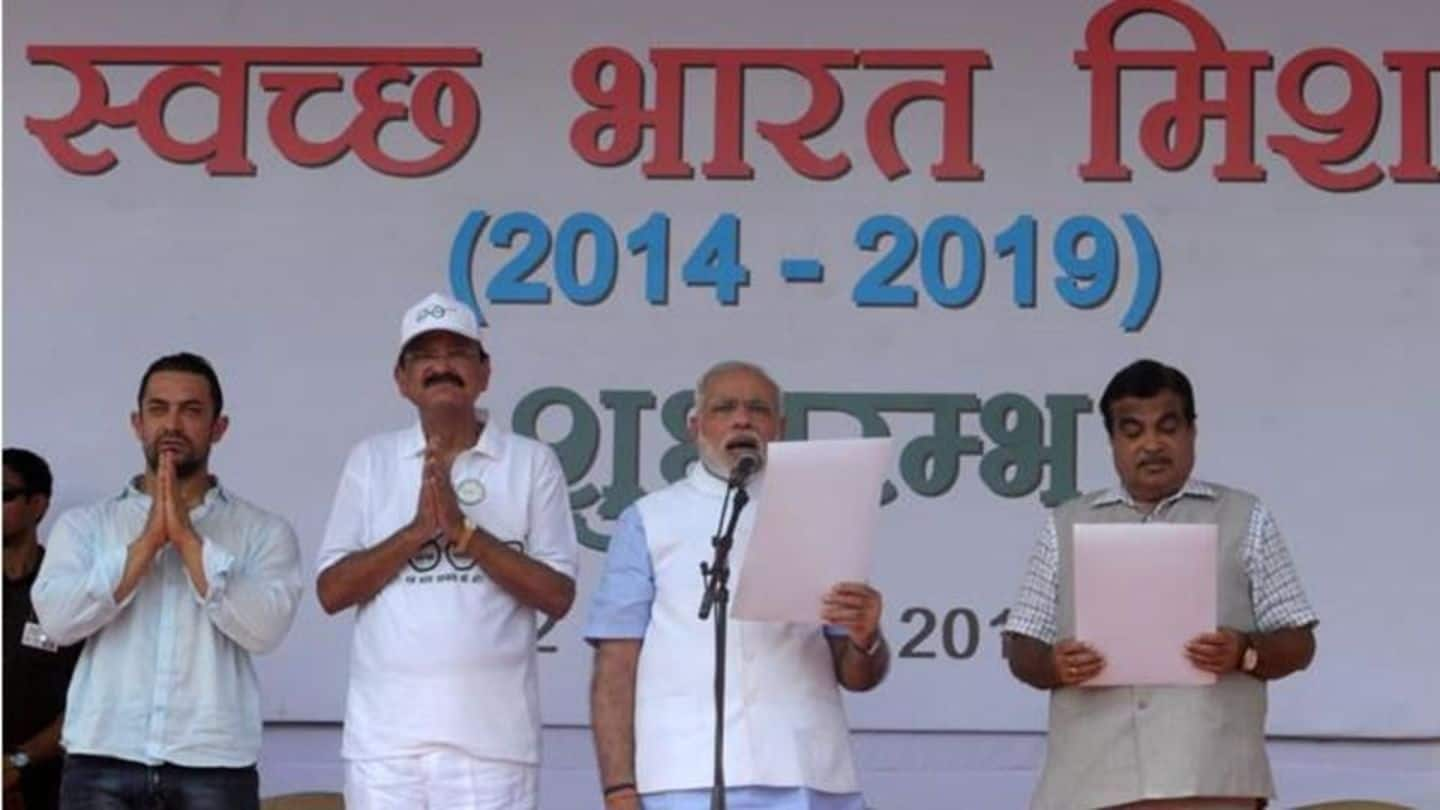
Three years on, how 'Swachh' is Modi's 'Bharat'?
What's the story
Prime Minister Narendra Modi's flagship project Swachh Bharat Abhiyan turns three today. Mr. Modi launched the mission on October 2, 2014 with a lofty vision - to rid India of open defecation by October 2, 2019. Three years on, where are we? And how clean India really is? Here we offer a detailed reading between the many government claims and the on-ground reality.
Claims
No way to assess if new toilets are being used
As per government estimates, the number of households with toilets has risen from 38.7% to 69.04% in the last three years. It also claims that 38.5% of India's villages are now open-defecation free. However, according to IndiaSpend, the claims of only 63% of these villages have been verified. Also, there is no way to find out if the newly-built toilets are being used at all.
Information
The criteria for villages to be declared open-defecation free
According to the ministry of drinking water and sanitation, villages are considered free of open defecation only when every household and public institution of the village use safe technology to dispose of feces, there is no manual handling of fresh excreta, and no odour and unsightly conditions.
Disparity
Government estimates differ from on-ground realities
Though government data reveals impressive progress, most of these claims stand unverified, say experts. According to National Family Health Survey 4, as of 2016, 36.7% of rural households had "improved sanitation facilities." However, a majority (51.6%) didn't, IndiaSpend reported. Despite a recent government report suggesting that 91.29% rural households with toilets were using it, the World Bank has called Swachh Bharat's implementation 'moderately unsatisfactory.'
Do you know?
Why World Bank didn't release promised fund for Swachh Bharat
The World Bank had promised India a loan of Rs. 10,500 crore for successful implementation of Swachh Bharat Gramin. However, since India failed to conduct an independent verification survey as asked, the apex bank refused to release the first instalment that was due in July'16.
Focus
Beyond building toilets: Have we lost sight of larger picture?
The movement is facing sharp criticism for focusing just on constructing toilets. Stakeholders say the nationwide mission has failed to address larger issues like monitoring and maintenance of the newly-built toilets, managing solid waste, allocation of appropriate funds to states, and resource and capacity building needed for successful implementation. Several states are under scanner for using questionable methods to force people into using latrines.
Achievement
Despite operational hazards, government optimistic about Swachh Bharat's success
Despite the criticism and the challenges, Swachh Bharat's supporters say there has been an evident behavioral change in the last three years, especially in rural India. At its best, the Clean India Mission is a people's movement aiming to help the nation manage its public health crises. However, the movement needs to pick up pace if it wants to meet its 2019 deadline.